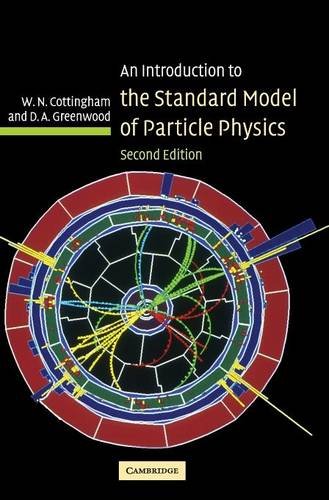An Introduction to the Standard Model of Particle Physics book download
Par becker john le vendredi, juin 9 2017, 06:36 - Lien permanent
An Introduction to the Standard Model of Particle Physics. D. A. Greenwood, W. N. Cottingham

An.Introduction.to.the.Standard.Model.of.Particle.Physics.pdf
ISBN: 0521852498,9780521852494 | 294 pages | 8 Mb

An Introduction to the Standard Model of Particle Physics D. A. Greenwood, W. N. Cottingham
Publisher: Cambridge University Press
Suggested in 1962 by Philip Warren Anderson and developed into a full model in 1964 independently and almost simultaneously by three groups of physicists: by François Englert and Robert Brout; by Peter Higgs; and by Gerald Guralnik, C. It comes in myriad incarnations. The discovery of the atomic nucleus This may seem like a lot of different particles but actually it was in the 1960's, shortly after the discovery of many of these particles, that the standard model of particle physics was formed and many of these particles were found to be made up of smaller parts. Andreas Krassnigg, a physicist with the University of Graz in Austria, explains: ”This Standard Model describes a set of particles from which we can attempt to build the universe as we know it. This finding is one step to backing up the standard model of particle physics, which predicts that the Higgs boson is real. This revolutionary experiment proved that elements were comprised of even smaller pieces and introduced atomic theory into the picture. Obviously, the Higgs boson's mass is less than infinite. The Standard Model of Particle Physics (SM) is the theory that describes, well, everything with the exception of gravity (Yes, this is admittedly a pretty big exception). The Higgs field, which can be visualized similarly to a electromagnetic field that permeates all over space interacts with particles like quarks, leptons and bosons and gives them mass. For an introduction to the Higgs boson, click here, here, or here (This last one is pretty good). So let's talk mass and why this is still a very good thing for particle physics. �Physics” is the study of Nature and natural phenomena.